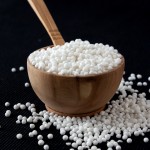Weekly Wrap Volume 66
 The Truth About Prepositions and the End of Sentences
The Truth About Prepositions and the End of Sentences
A great man once said, “This is the sort of English up with which I will not put.” Eloquently highlighting the ridiculousness of strictly adhering to the rule against ending a sentence with a preposition, Winston Churchill may not have realized that his defiance is supported by history. As it turns out, there was never any such generally recognized rule. So where did the idea that you shouldn’t end a sentence with a preposition start? Many writers in Restoration Era England (1660-1689), and in particular “Glorious John” Dryden (one of the greatest poets, dramatists… (more)
 The Many Myths Surrounding the Pilgrims and Thanksgiving
The Many Myths Surrounding the Pilgrims and Thanksgiving
Myth: Pilgrims wore black and white clothing with buckled top hats. The myth that they dressed like this stems from a popular clothing style in England in the late 17th century, which carried over to 18th and 19th century artist depictions of Pilgrims. In fact, historical records of Pilgrims’ clothing, such as the passenger list of the Mayflower, wills, which included descriptions of clothing, and other such records, paint a very different picture than the late 17th century artists depicted. For starters, the Pilgrims didn’t wear buckled hats. They also didn’t wear buckles on their shoes or waists. Buckles were expensive and not in fashion at the time. They simply wore the much cheaper leather laces to tie up their shoes and hold up their pants. Buckles later became very popular in England for… (more)
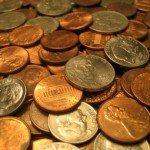 Why Some Coins in the United States Have Ridges
Why Some Coins in the United States Have Ridges
Putting ridges on some coins in America got its start back in the 1700′s. At this time, coins were actually made of materials that were worth what the coin was worth. For example, a half dollar silver coin contained fifty cents worth of silver. Likewise, a $10 gold coin contained $10 worth of gold. As a consequence of this, people started to shave off bits of these coins around the edges; so now a $10 gold piece only contained, say… (more)
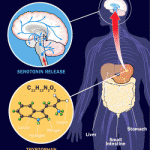 Turkey Does Not Make You Drowsy After You Eat It
Turkey Does Not Make You Drowsy After You Eat It
Now to be clear, turkey does contain tryptophan. Tryptophan is an amino acid which the human body doesn’t naturally produce, but is essential to proper body function and, thus, must be acquired from food. The reason tryptophan is tied to drowsiness is that it is used by your body to create serotonin. Serotonin, among other things, acts as a calming agent in the brain and plays a key role in sleep. So with turkey containing tryptophan, one would logically say it would make you sleepy after you eat it… except, this isn’t actually the case. So, why not? Primarily because of how we eat turkey and more importantly how the body deals with… (more)
Little pearls swimming in a creamy custard flavored with vanilla or lemon, many of us have fond (and others not so fond) childhood memories of tapioca pudding. Although this staple dessert of the 1970s went out of vogue for a while, today it’s making a comeback. You may not know, however, that the tapioca we use is a refined product whose parent plant is filled with dangerous toxins that, absent proper preparation, can result in cyanide poisoning and possible death. Cassava, the plant from which tapioca is made, was one of the first domesticated more than 12,000… (more)
Bonus Quick Facts:
- How do we know vampires don’t exist? If each vampire ate just 1 meal a day, starting with just 1 vampire and each victim then turning into a vampire, it would take about 1 month for the entire human population to become vampires. (QF 466)
- Pearls will dissolve if placed in vinegar as they are mostly made up of calcium carbonate, easily dissolved by acetic acid, which is most of what vinegar is. (QF 510)
- The 7 Wonders of the Ancient World were: the Great Pyramid of Giza (2584-2561 BC), the Hanging Gardens of Babylon (600 BC), the Temple of Artemis at Ephesus (550 BC), the Statue of Zeus at Olympia (435 BC), Mausoleum at Halicarnassus (351 BC), the Colossus of Rhodes (292-280 BC), and the Lighthouse of Alexandria (280 BC). It should be noted though that many historians doubt that the Hanging Gardens ever actually existed. (QF 519)
- If you live in the U.S., you are nearly four times as likely to be killed by a vending machine as a shark, with an average annual death rate of 2.18 for vending machines and 0.6 deaths from shark attacks. (QF 540)
- You are about 40% more likely to survive a commercial plane crash if you sit in the back row of the plane compared to the front row, according to a study done by Popular Mechanics covering every accident aboard commercial planes from 1971 to 2007. (QF 542)
- “Nazi” isn’t just the name of a one-time prominent political party, but also the Swahili word for “coconut”. (QF 551)
- Ever wonder what the Q in Q-tips stands for? Wonder no more- it stands for “Quality”. Before they were given that name, they were called “Baby Gays”, invented and named in the 1920s by Leo Gerstenzang. (QF 566)
- The wife of famed poet Henry Wadsworth Longfellow tragically died when she accidentally dropped a burning match onto her hoop skirt, which burst into flames and ultimately killing her. (QF 578)
- Despite being twice as abundant as iron in the earth’s crust, in much of the 19th century, aluminum cost more than gold due to the difficulty in isolating it from other substances. For reference, in the 1850s, one ingot of aluminum went for $550 (about $15,000 today). By 1900, thanks to technological advancements, the same ingot was selling for just 25 cents ($7 today). (QF 584)
- In the time it takes you to listen to this, hundreds of billions of neutrinos have passed through your body. Specifically, close to 65 billion neutrinos from the Sun pass through every square centimeter of you that is currently perpendicular to the Sun every single second that passes. (QF 587)
Other Interesting Stuff:
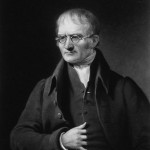 150 Years in a Jar- The Story of John Dalton’s Eyeballs
150 Years in a Jar- The Story of John Dalton’s Eyeballs
John Dalton (1766-1844) was a distinguished scientist who is known for, among many other things, his theories about atoms, his law of partial pressures of gases and liquids (published in 1803), and being one of the first scientists to study color blindness. In fact, because of his work, for some time a common term for color blindness was “Daltonism,” and the French for “color blind” is “Daltonien.” Color blind himself, Dalton was only able to see two primary hues: a yellow-ish hue that encompassed a typical person’s green, yellow and orange, and a second that was the equivalent of a… (more)
 That Time a Commercial Aircraft Ran Out of Fuel Mid-Flight- The Gimli Glider
That Time a Commercial Aircraft Ran Out of Fuel Mid-Flight- The Gimli Glider
On July 23, 1983, in the small town of Gimli, Manitoba, Captain Robert Pearson and Co-Pilot Maurice Quintal expertly glided a 100-ton Boeing 767 carrying 69 people to a safe landing without engines, air brakes or flaps, and minimal control of the aircraft. The flight plan for Canada 143 that day began with a short jaunt from Montreal, Quebec to Ottawa, Ontario. Right from the beginning, the crew realized the plane had a faulty fuel control: “A computer known as the Fuel Quantity Information System Process manages the entire fuel loading process. . . . But the FQIS was not working properly on Flight 143.” With FQIS… (more)
 What Causes the Smell After Rain
What Causes the Smell After Rain
There are three primary sources of smells that commonly occur after rain. The first, the “clean” smell, in particular after a heavy thunderstorm, is caused by ozone. Ozone (scientifically known as trioxygen due to the fact that it is comprised of three oxygen atoms) is notably pungent and has a very sharp smell that is often described as similar to that of chlorine. Some people can smell ozone before the storm has even arrived. Before a thunderstorm rolls in, lightning can sometimes rip nitrogen and oxygen molecules in the environment to pieces. This can ultimate result in a small amount of ozone forming… (more)
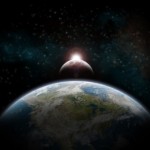 The United States Once Planned On Nuking the Moon
The United States Once Planned On Nuking the Moon
If you presumed that the reasoning behind such an act was “because we can”, you are absolutely correct. That is exactly why the U.S. wanted to do it, in order to one-up the Soviet Union, who were perceived as leading the space race at the time. The project was labeled “A Study of Lunar Research Flights” or “Project A119″ and was developed by the U.S. Air Force in the late 1950s. It was felt that this would be a relatively easy thing to do and would also boost public… (more)
This Week’s Podcast Episodes:
- Podcast Episode #280: Craig and His Lists
- Podcast Episode #281: The Many Myths Surrounding the Pilgrims and Thanksgiving
- Podcast Episode #282: The Truth About Turkey and Drowsiness
- Podcast Episode #283: Sarah Josepha Hale, Mary Had a Little Lamb, and the Origin of the Thanksgiving Holiday
- Podcast Episode #284: Black Friday
Quote of the Week:
- “Most comedy is based on getting a laugh at somebody else’s expense. And I find that that’s just a form of bullying in a major way. So I want to be an example that you can be funny and be kind, and make people laugh without hurting somebody else’s feelings.” Ellen DeGeneres
| Share the Knowledge! |
|

